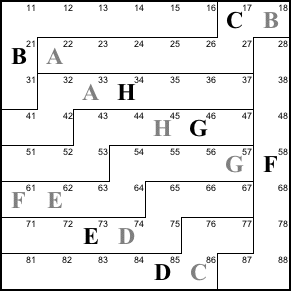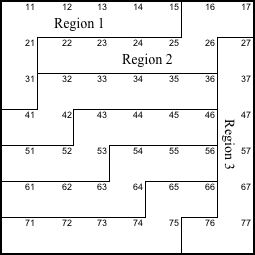
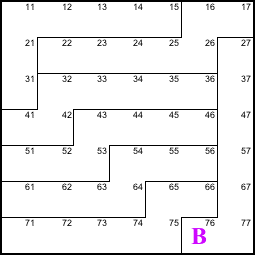
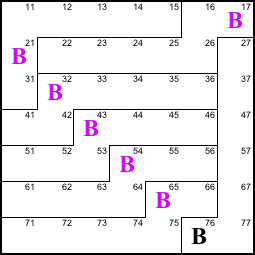
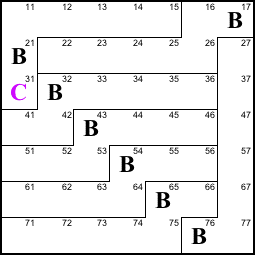
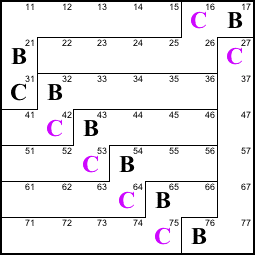
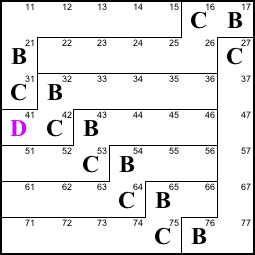
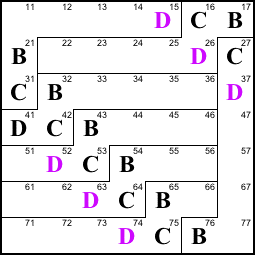
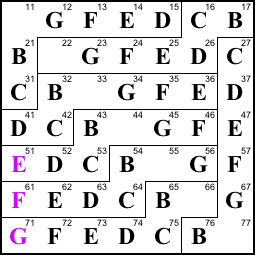
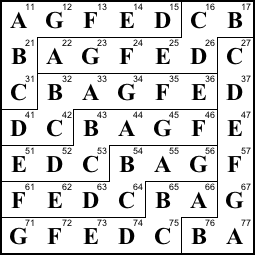
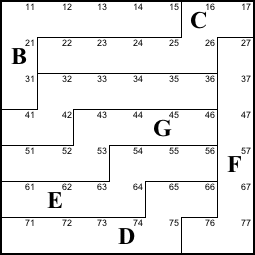
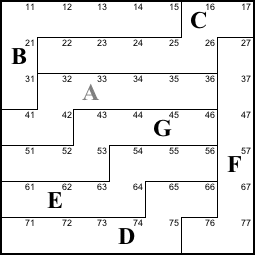
|
It strikes me that I didn't explain my numbering of the regions. I started
with regions 1, 2, and 3 as you labeled them and then I numbered the remaining
regions 4..N from top to bottom. I just noticed that you had left the
remaining regions unnumbered in your diagram.
This means that region R (4 <= R <= N) contains the squares (R-1,R-2)...(R-1,N-1) and (R,1)...(R,R-2), where (R,C) indicates the square in row R and column C. Since the squares (R,R-1)...(R,N-1) are contained in region R+1 (3 <= R <= N-1), it follows that the square (R,C) (4 <= R <= N-1) belongs to
The same trichotomy applies when R = 3 except that region R is replaced by region 1. The trichotomy becomes a dichotomy when R = N because region R+1 is replaced by region 3. We consider the position of the hint in each row and show that these hints lie in distinct regions. The hint in row 1 is in column N-1. The hints in rows 2...(N+3)/2 lie in column 2R-3, where R is the row number. The hints in rows (N+5)/2...N lie in column 2R-N-3. If 3 <= R <= (N+1)/2, then R-1 <= R <= (C = 2R-3) <= N-2 <= N-1, so the hint in row R belongs to region R+1. If (N+5)/2 <= R <= N, then 1 <= 2 <= (C = 2R-N-3) <= R-3 <= R-2, so the hint in row R belongs to region R. We summarize the hint locations in the following table:
Thus we can see that each hint is in its own region. |
